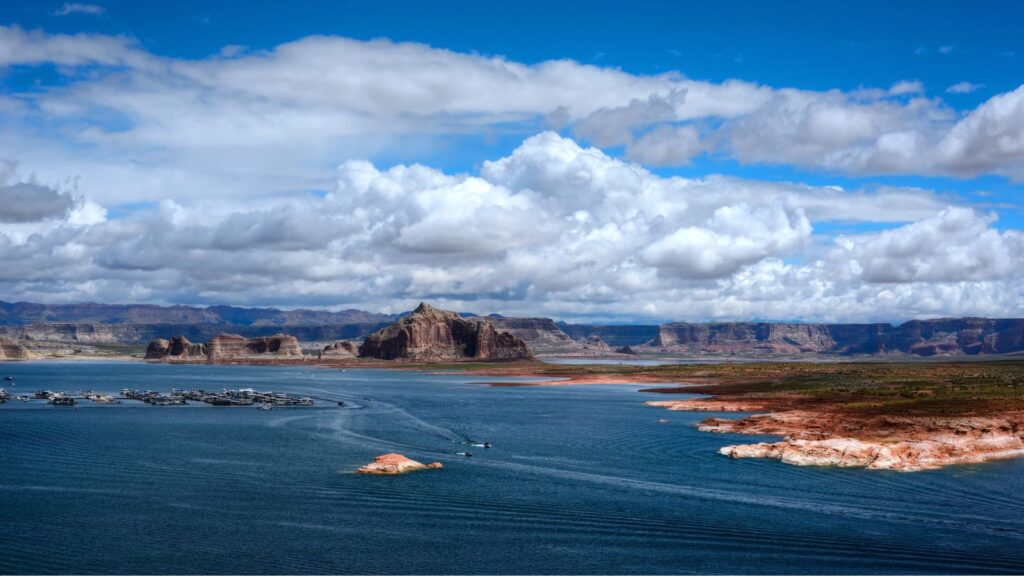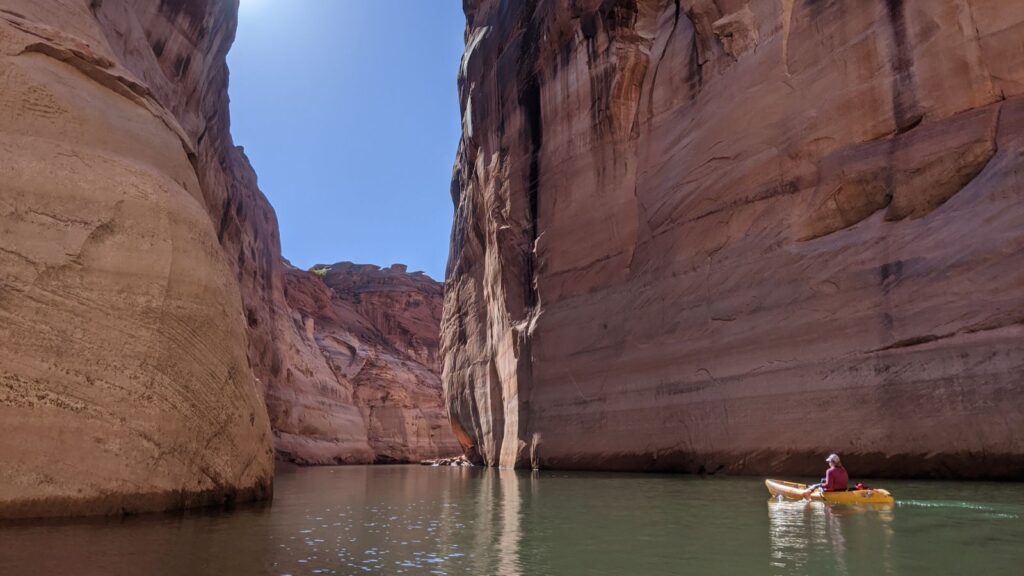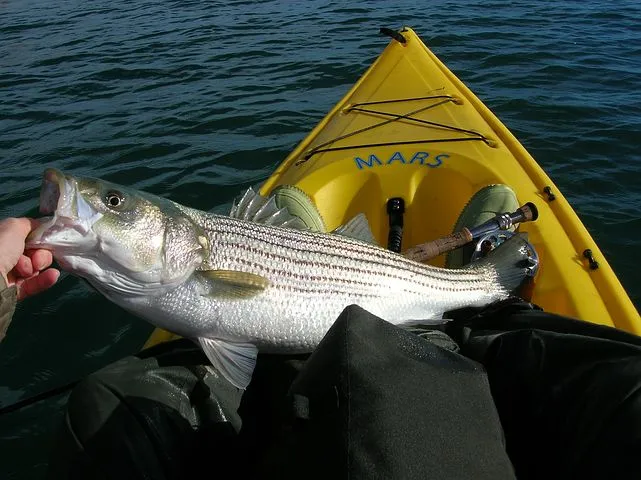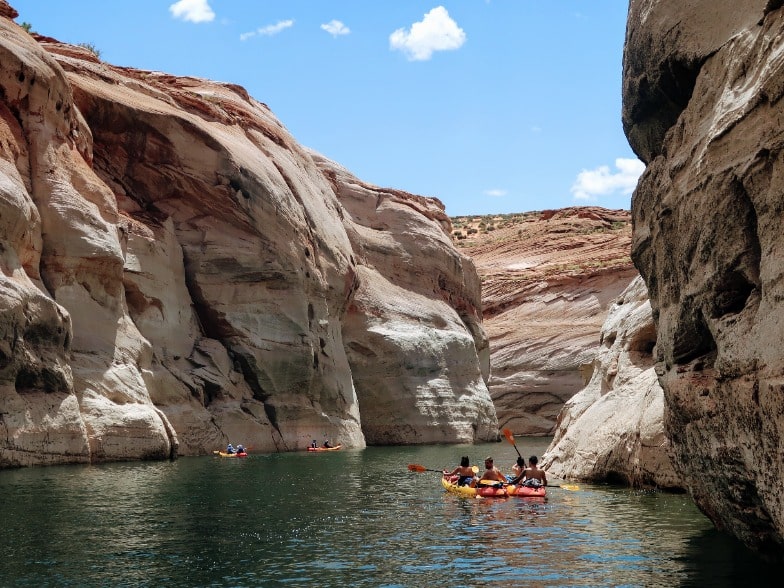Get Reel: Catching Catfish, Striped Bass & Largemouth Bass in Lake Powell
Lake Powell offers great opportunities to fish for all fishermen and their families. This man-made reservoir has become a popular home to some terrific species of fish. There is a variety of fish that you can catch at Lake Powell throughout the year. While Lake Powell does have some fish species located on the US Endangered Species List, they do have an abundance of other species that provide great opportunities for fishing. Some of more fun fish to catch are Catfish, Striped Bass and Largemouth Bass. We will discuss the basics for each of these fish and our top tips on how to successfully catch them.

Catfish
When fishing for catfish in Lake Powell, the popular and desired species is Channel Catfish. Gaining more popularity as a food options for Americans, more anglers seem to be targeting these fish. As mentioned below, Bullhead Catfish aren’t targeted by fishermen since they don’t taste as good as the Channel Catfish. Most Catfish in Lake Powell thrive on their keen senses of smell and taste.
Channel Catfish
The quickest fish to catch at Lake Powell, even with your traditional rod-and-reel method, is the catfish. You can go out any night during the summer until the beginning of fall, throw out your rod with just table scraps and anchovies as bait, and yield successful results right out of the lake bottom. The catfish is visibly present everywhere, but they are more abundant in shallow and sandy waters. These fish make for a delicious meal which is why it’s not a surprise that millions of anglers around the world target them every year. Anglers hope to find a channel catfish that weighs up to 20 lbs in Lake Powell but most are between 2-4 lbs. The channel catfish is North America’s most popular species of catfish.
Bullhead Catfish
The bullhead catfish is a bit different from the channel catfish, as well as other types, by its squarish tailfins as opposed to forked tailfins. They’re not normally targeted by serious anglers and are merely an incidental catch when fishing for other types. This catfish is not very common in Lake Powell, as they are usually seen on the upper areas of the reservoir, or in more brackish waters.
Striped Bass
Striped bass, or commonly known as Stripers, are the ultimate reward for those who are into sport fishing, due to the variety of angling methods that you can use to catch them as well as the incredible fishing battle that they provide.
Stripers are quite common in Lake Powell and they can be caught from the shore or an anchored houseboat. Stripers are fished during the fall, usually after Labour Day and into the month of November. All it takes is a little anchovy and they will start to bite.
However, fishing for striped bass can also be successful during late fall and early winter when using heavy spoons or bucktail jigs. They are normally travel in groups and at a depth of between 60-100 feet. When the water cools down to 50 degrees, they become less active.
Chumming
In the Spring, stripers migrate to waters that are 30-80 feet deep, which are closer to river inlets. Because of this migration, stripers respond well to chumming. You can try the Escalante Arm, the second largest river arm in Lake Powell, which has been known to be an incredible fishing spot for chumming. They can be found close to the dam or circling the water pump of the Generating Station of the Navajo Power Plant.
State officials address the overabundance of stripers by allowing fishermen to utilize the chumming method. Chum is natural fish that is grounded into pieces of chunk that is used to lure stripers. Anchovies have been very impactful in luring schools of stripers and creating a lot of excitement around the area.
Trolling
Stripers migrate to main lake points, or shallow waters at 40 ft deep or less, as well as clustering in rock piles when spawning. You can try fishing with various kinds of bait such as fish anchovy, lures with rattles, or with a crankbait like the Rapala Shad Rap. You can also try casting 3-5 inch tubes that are in crayfish or shad colours. Additionally, plastic grubs also help, especially that stripers linger in their spawning areas all through spring until early summer. However, when the waters become too warm for their comfort, they are forced to go to deeper waters.
Jigging
When stripers go as deep as 60-90 ft, you have to take out your leaded lines or downriggers to jig at this depth. You can troll the main channel by going as fast as 5-7 mph and use crankbaits. Crankbaits and spoons are usually shad-coloured and trigger powerful striper bites. Alternatively, you can use jigging or fishing with natural bait, but remember that stripers will be continually on the move chasing baitfish.
Boil Fishing
In the summer to early fall, stripers migrate to particular waters to prey on schools of shad. A boil occurs when stripers get excited and create an “explosion” on the lake surface as they go on a feeding frenzy. You can take advantage of this by moving towards the edge of the boil, killing your boat engine (to not disturb the shads), and while the stripers are feeding aggressively, you can join in on the fun. Deploy your lures or natural bait into the area where the stripers are feeding and let the games begin!
The best bait in a boil is topwater lures that have a side-to-side motion which resemble a shad. Stripers will certainly attack these lures, violently, at times.
Boils often occur in the same spots and at the same time. You can stay even after a boil stops because stripers are still swimming around looking for wounded or stunned shads. You can throw in rattling crankbaits or spoons to catch any remaining bass.
Largemouth Bass
The largemouth is freshwater gamefish which are usually caught for the thrill of the fight since they vigorously try and set themselves free from your hook once you’ve hooked it.
Although the largemouth can be caught throughout the year, the best time to fish for them is when the waters start to warm in the late winter. The best type of bait to use will depend on where they are as influenced by the season.
Flats and Deep Waters
You can find them close to broken rocks and you can cast live bait such as salamanders (water dogs) which are quite effective, as well as spider jigs in different colors (crayfish, chartreuse, white, smoke, purple and black), plastic lizards, spinnerbaits or jig-n-pigs.
Flat Shallows
In April through May, largemouth goes to the shallows to spawn. You can check channel pockets, broken rocks, and flats with some trees or brush and find them in waters less than 15 ft. You can use plastic grubs or tubes, spider jigs, spinnerbaits or jig-n-pigs.
Scattered Areas
After spawning, the largemouth scatters and can be caught by using jerk baits and topwater lures. They are usually in shaded broken rocks, main lake points, and walls. Tube baits, spider jigs, worms, and 3-5 inch plastic grubs will also work, and you have various options as to their color. On tough days, you can try fishing with Carolina rig or split-shot.
Main Shallows
As the water begins to cool in the fall, largemouth follows the shads in the main lake and canyons. You can use topwater lures, jerk baits, crankbaits (for windy areas) or small plastic tubes or grubs to attract them, in low-light conditions. You can head to deeper waters at 40 ft and try to lure them with tube baits, spider jigs and plastic grubs that come in a variety of colors.
Lake Powell remains a popular tourist location for several millions of people each and every year. Their fishing scene has continued to grow and has attracted anglers from all around.
Now that you know some of the most popular fish to catch in Lake Powell, it’s time to start fishing!
Written By Charles LaRosa. Read more at https://www.catchandfillet.com

Another popular activity in Page, Arizona is kayaking Antelope Canyon and Lake Powell. Lake Powell Paddleboards and Kayaks is the original paddlesport store at Lake Powell since 2013! We offer Lake Powell kayak rentals, Lake Powell paddleboard rentals and Lake Powell tours on kayaks and paddleboards. We hope to see you out there!






